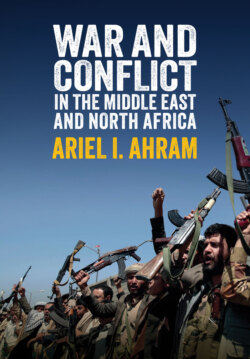Читать книгу War and Conflict in the Middle East and North Africa - Ariel I. Ahram - Страница 16
Second Cut: Conflict Types
ОглавлениеAnother step in interrogating claims of regional exceptionalism is to examine the types of war fought within MENA. Figure 1.4 presents the data on inter-state war regionally and globally. Interstate war is clearly the least common form of warfare globally. Inter-state war is nearly entirely absent from Latin America and Europe. Some analysts deem interstate war so rare as to be obsolete or extinct.15 Yet MENA consistently accounts for a significant portion of interstate conflicts globally. Much of this comes from the persistence of conflicts between Israel and its neighbors, a topic to which we shall return later on. But there are other cases to consider as well, such as the Iran–Iraq War and the Iraqi war against Kuwait in 1990 and 1991. The fact that MENA seems to be uniquely prone to interstate conflict adds an important caveat to the global-level analysis favored by both CoW and PRIO/UCDP projects. It suggests that regional security complexes, not just world systems, have a significant part in shaping conflict.
Figures 1.5 and 1.6 present the data on internal (civil) wars and internationalized internal wars. In examining trends in internal war, MENA is much less remarkable.
Figure 1.4 Interstate conflicts, MENA v. the world
Source: Peace Research Institute, Oslo/Uppsala Conflict Data Project, data available at https://www.prio.org/Data/Armed-Conflict/UCDP-PRIO/; Gleditsch et al., “Armed Conflict 1946–2001: A New Dataset.”
The global trend in internal wars began increasing in the 1960s and peaked in the mid-1990s, with MENA’s trajectory basically following this global course. Internationalized internal wars rose dramatically in the mid-1990s globally, with MENA following course through the 2000s and 2010s.
